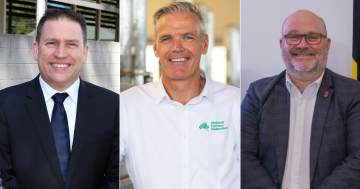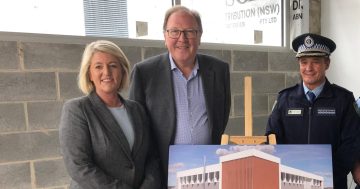 1. This week 10 years ago, Victorian Minister for Aboriginal Affairs, Jeanette Powell launched a new policy framework setting priorities and targets in Aboriginal Affairs for the next six years to help the State’s young Aboriginal population create a better future.
1. This week 10 years ago, Victorian Minister for Aboriginal Affairs, Jeanette Powell launched a new policy framework setting priorities and targets in Aboriginal Affairs for the next six years to help the State’s young Aboriginal population create a better future.
Mrs Powell said the framework would build on the strength and resilience of Aboriginal Victorians to set policies and programs to realise their social, cultural and economic aspirations.
“Aboriginal economic participation and development is central to this new approach because every Victorian should have the opportunity to fulfil their aspirations and reach their full potential,” Mrs Powell said.
2. The “Emergency Alert” system came into service in Queensland, using technology to send emergency messages directly to mobile phones and landlines based on their location as identified by specialised software.
Minister for Police and Community Safety, Jack Dempsey said previously, messages could only be sent to people based on their billing address, which meant those travelling in an area under threat would not receive text messages to their phone.
“Queensland is home to many top tourist destinations, which makes this software extremely useful when having to alert communities where the majority of the population are from out of town,” Director General of the Department of Community Safety, Kelvin Anderson said.
3. Queensland Health released the Sun Effects Booth app allowing young people to see the potential impact of sun damage and how they would look if their sun safety habits did not improve.
Chief Health Officer, Dr Jeannette Young said Queenslanders aged 16 to 24 had the highest rates of sunburn, with about three in four having been sunburnt in the past 12 months.
“Queensland has the highest rates of skin cancer in the world, but skin cancer is a preventable cancer and the sooner you practise sun safety, the better the outcome for your skin,” Dr Young said.
“Young people are encouraged to download the new app to see how the decisions they make today could affect the way they look tomorrow.”
4. PS staff and schoolteachers experiencing domestic violence were to receive more support in the workplace following changes to the SA Public Sector Wages Parity Enterprise Agreement.
Minister for Industrial Relations, Russell Wortley said a clause had been inserted into the Agreement enabling victims to access leave and other entitlements when they needed.
“Domestic violence at work can have a dramatic impact on the health, safety and welfare of workers, and can cause significant economic and social costs to the victim, their family and the community,” Mr Wortley said.
He said he would like to see these provisions in all workplace agreements in both the public and the private sectors in the future.
5. Also in South Australia, Premier, Jay Weatherill said the release of the final Murray–Darling Basin Plan was a great victory for the health of the river, increasing the amount of water to be returned from 2,750 gigalitres to 3,200 gigalitres.
Minister for the River Murray, Paul Caica said the additional water would help flush salt out of the river and keep salinity levels below thresholds that were dangerous to animals and plants in the Lower Lakes and Coorong.
“It will reduce the risk of the Murray Mouth needing to be dredged,” Mr Caica said.
“It will keep water levels high enough to prevent acidification in the Lower Lakes and prevent riverbank collapse.”
He said it would also help floodplains support healthy red gum forests, waterbird and fish breeding, and habitat for native plants and animals.
6. And a decade ago, new technology was being trialled in Western Australia to help scientists determine which native species were tempted to eat cane toads.
Research scientist at the Department of Environment and Conservation, Dr David Pearson said baits and remote cameras were set up throughout the Kimberley region and the results had shown that several target species such as northern quolls, blue-tongue lizards and some goannas would eat the baits.
Dr Pearson said as the main impact of cane toads was the poisoning of a range of native predators, it was hoped use of the baits could train species to avoid eating toads through “taste aversion”.
“We want to teach native predators that toads are unsuitable prey that will result in sickness and possibly death,” Dr Pearson said.











